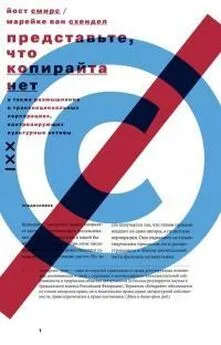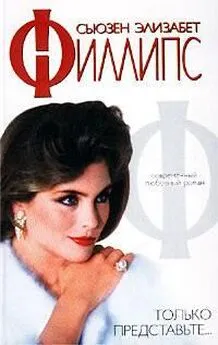Йост Смирс - Представьте, что копирайта нет
- Название:Представьте, что копирайта нет
- Автор:
- Жанр:
- Издательство:неизвестно
- Год:неизвестен
- ISBN:нет данных
- Рейтинг:
- Избранное:Добавить в избранное
-
Отзывы:
-
Ваша оценка:
Йост Смирс - Представьте, что копирайта нет краткое содержание
Представьте, что копирайта нет - читать онлайн бесплатно полную версию (весь текст целиком)
Интервал:
Закладка:
Есть два возможных пути борьбы с существующей массовой угрозой общественному здоровью. Первый — искоренить этот недостойный и губительный бизнес. Вероятно, мы не единственные, кто считает данную задачу непосильной. Другая возможность — лишить нелегальное производство его ценности. Если бы наши предложения стали реальностью и патенты перестали существовать, лекарства продавались бы в аптеках по цене, ненамного превышающей ту, в которую обходится их изготовление. Это лишает мошенников всякого стимула: возможность получить прибавочную стоимость исчезнет, а заниматься производством по цене ниже себестоимости — не слишком привлекательная перспектива. И, как это ни удивительно, отмена патентной системы в результате обернётся настоящим благословением для здоровья населения.
И снова о художниках
Начав с фильмов, музыки, книг, театра, танца, визуальных искусств и дизайна, в заключительной главе мы внезапно перешли к медицине. Ничего удивительного, ведь если один вид права на интеллектуальную собственность, например, копирайт, не имеет под собой прочных оснований, то логично предположить, что и у других его видов, включая патентную систему, могут быть свои проблемные участки. К тому же, доминирование на рынке имеет место не только в культурных секторах. Это феномен, который в последние несколько десятилетий успел охватить все отрасли торговли и индустрии. Таким образом, существует множество различных областей, где применяются права на интеллектуальную собственность, а доминирование на рынке проявляет свои негативные аспекты.
И всё же главной темой этой книги остаётся наша забота о том, чтобы множество художников и их посредников могли продавать свои произведения и иметь достойный заработок; чтобы не существовало доминирующих сил, которые оттесняли бы их на периферию рынка, скрытую от глаз публики; чтобы аудитория могла беспрепятственно делать свой выбор из широкого разнообразия видов и жанров художественного самовыражения в соответствии с собственными вкусами; чтобы общественное достояние в области знания и творчества не приватизировалось, но оставалось нашей общей собственностью.
Литература
Anderson С. The Long Tail. Why the Future of Business Is Selling Less of More. — New York: Hyperion, 2006.
Anderson C. Free. The Future of Radical Price. — London, RH Business Books, 2009.
Bagdikian В. H. The New Media Monopoly. — Boston: Beacon Press, 2004.
Baker С. E. Media Concentration and Democracy. Why Ownership Matters. — Cambridge: Cambridge University Press, 2007.
Barthes R. La mort de Fauteur, Manteia. — No. 5,4e trimester, 1968. Published as well in: R. Barthes. Oeuvres complètes. — Tome II, 1966-1973. — Paris: Editions du Seuil, 1994. — P. 491-495.
Beck A. (ed. ). Cultural Work. Understanding the Cultural Industries. — London: Routledge, 2003.
Benkler Y. The Wealth of Networks. How Social Production Transforms Markets and Freedom. — Yale: Yale University Press, 2006.
Bently L, Sherman B. Intellectual Property Law. — Oxford: Oxford University Press, 2004.
Bettig R. V. Copyrighting Culture. The Political Economy of Intellectual Property. — Bouder: Westview Press, 1996.
Boldrin M, Levine D. K. Against Intellectual Monopoly (http://dklevine.com/general/intellectual/againstnew.htm).
Bollier D. Silent Theft. The Private Plunder of Our Common Wealth. — New York; London: Routledge, 2003.
Boyle J. Shamans, Software, and Spleens. Law and the Construction of the Information Society. — Cambridge: MA; London: Harvard University Press, 1996.
Brown M. F. Who Owns Native Culture? — Cambridge, Mass.: Harvard University Press, 2003.
Convention on the Protection and Promotion of the Diversity of Cultural Expressions. — Paris: Unesco, 2005.
Coombe R. J. The Cultural Life of Intellectual Properties. Authorship, Appropriation, and the Law. — Durham; London: Duke University Press, 1998.
Correa С. M. Intellectual Property Rights, the WTO and Developing Countries. The TRIPS Agreement and Policy Options. — London; Penang: Zed Books; Third World Network, 2000.
Correa С. M. Do small and medium-sized enterprises benefit from patent protection? — In Pietrobelli, 2004. — P. 220-239.
Cowen T. In Praise of Commercial Culture. — Cambridge; London: Harvard University Press, 1998.
Cowen T. Creative Destruction. How Globalization is Changing the World’s Cultures. — Princeton; Oxford: Princeton University Press, 2002.
Cowen T. Good & Plenty. The Creative Successes of American Arts Funding. — Princeton; Oxford: Princeton University Press, 2006.
Croteau D., Hoynes W. The Business of Media. Corporate Media and the Public Interest. — Thousand Oaks; London; New Delhi: Pine Forge Press, 2006.
Deere C. The Implementation Game. The TRIPS Agreement and the Global
Politics of Intellectual Property Reform in Developing Countries. — Oxford: Oxford University Press, 2009.
Doyle G. Media Ownership. — London: Sage, 2002 (a).
Doyle G. Understanding Media Economics. — London: Sage, 2002 (b).
Drahos R, Braithwaite J. Information Feudalism. Who Owns the Knowledge Economy? — London: Earthscan, 2002.
Drahos R, Mayne R. Global Intellectual Property Rights. Knowledge, Access and Development. — Basingstoke: Hampshire; New York: Palgrave Macmillan and Oxfam, 2002 (a).
Drahos P. An Alternative Framework for the Global Regulation of Intellectual Property Rights. — Camberra: Centre for Governance of Knowledge and Development, 2005.
Dreier T, Hugenholtz R B. Concise European Copyright Law. — Alphen van den Rijn: Kluwer International Law, 2006.
Drucker P. Innovation and Entrepreneurship. — New York: Harper Business, 1993.
Fisher W. W. Promises to Keep. Technology, Law, and the Future of Entertainment. — Stanford: Stanford University Press, 2004.
Florida R. The Rise of the Creative Class. And How It’s Transforming Work, Leisure and Everyday Life. — London: Basic Books, 2004.
Florida R. Cities and the Creative Class. — New York; London: Routledge, 2005.
Florida R. The Flight of the Creative Class. The New Global Competition for Talent. — New York: HarperBusiness, 2005 (a).
Frey B. S., Pommerehne W. W. Muses and Markets. Explorations in the Economics of the Arts. — Oxford: Basil Blackwell, 1989.
Frey B. S. Art & Economics. Analysis & Cultural Policy. — Berlin: Springer, 2000.
Frey B. S. Some considerations on fakes in art: an economic point of view. — In Mossetto, 2004. — P. 17-29.
Frith S. ( ed. ). Music and Copyright. — Edinburgh: Edinburgh University Press, 1993.
Frith S., Marshal L. (ed. ). Music and Copyright. — Second Edition. — Edinburgh: Edinburgh University Press, 2004.
Fukuyama F. Trust. The Social Virtues 8c the Creation of Prosperity. — New York: The Free Press, 1995.
Gagnon M.-A., Lexchin J. The Cost of Pushing Pills. A New Estimate of Pharmaceutical Expenditures in the United States. — In PloSMedicine, January, 2008, Vol. 5, Issue 1 (www.plosmedicine.org).
Geinser G., Wijnberg N. W. Effects of Reputational Sanctions on the Competitive Imitation of design Innovations. — In Organization Studies, 2001,22/4. —P.563-591.
Germann C. Content Industries and Cultural Diversity. The Case of Motion Pictures. — In Culturelink (Zagreb), Special Issue, 2002/2003. — P.97-140.
Gerven W. van, barouche R, Lever J. Cases, Materials and Texts on National, Supranational and International Tort Law. — Oxford: Hart Publishers, 2000.
Ginsburgh V.A., Throsby D. (eds.). Handbook of the Economics of Art and Culture. — Amsterdam: North-Holland, 2006.
Glenny M. McMaffia. Crime Without Frontiers. — London: The Bodley Head, 2008.
Goldstein P. International Copyright. Principles, Law and Practice. — Oxford: Oxford University Press, 2001.
Gowers A. Gowers Review of Intellectual Property. — London: HM Treasury, 2006.
Gräber, Beat C. a. o. (eds.). Digital Rights Management. The End of Collecting Societies? — Berne: Staempfli Publishers Ltd, 2005.
Grandstrand О. (ed.). Economics, Law and Intellectual Property. — Amsterdam: Kluwer Academic Publicers, 2003.
Grosheide W., BrinkhofJ. (eds.). Intellectual Property Law. Articles on Cultural Expressions and Indigenous Knowledge. — Antwerp: Intersentia, 2002.
Hagoort G. Cultural Entrepreneurship. — Utrecht: Eburon, 1993.
Harold C. OurSpace. Resisting the Corporate Control of Culture. — Minneapolis: University of Minnesota Press, 2007.
Hartley J. (ed.). Creative Industries. — Oxford: Blackwell, 2005.
Hauser. Sozialgeschichte der Kunst und Literatur. — München: C. H. Beck, 1972.
Heins M. «The Progress of Science and Useful Arts»: Why Copyright Today Threatens Intellectual Freedom. — New York: Brennan Center for Justice, 2003.
Heller A. The Power of Shame. A Rational Perspective. — London: Routledge & Kegan Paul, 1985.
Hemmungs Wirtén E. No Trespassing. Authorship, Intellectual Property Rights, and the Boundaries of Globalization. — Toronto: University of Toronto Press, 2004.
Hesmondhalgh D. The Cultural Industries. — London: Sage, 2002.
Hesmondhalgh D. (ed.). Media Production,Maidenhead. — Berkshire: Open University Press, 2006.
Hisrich R. D., Peters M. P. Entrepreneurship. — Boston: McGraw-Hill, 2002.
Hoskins C., McFadyen S., Finn A. Media Economics. Applying Economics to New and Traditional Media. — Thousand Oaks; London: Sage, 2004.
Читать дальшеИнтервал:
Закладка:








